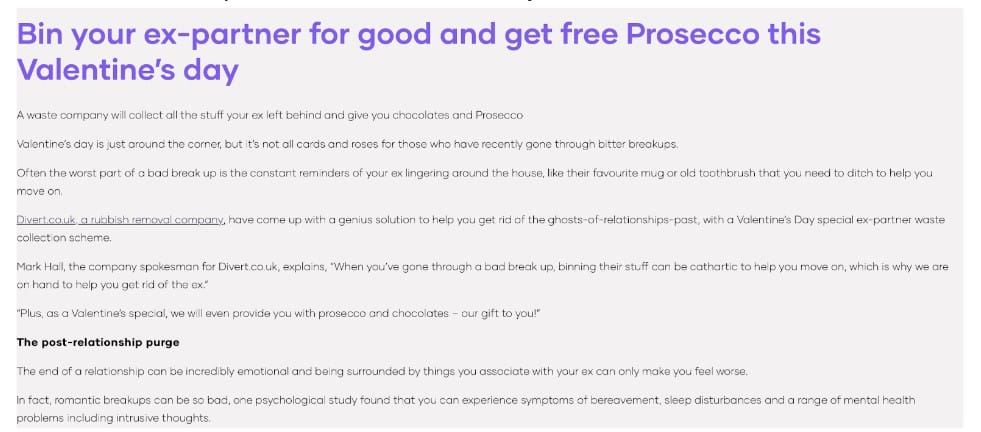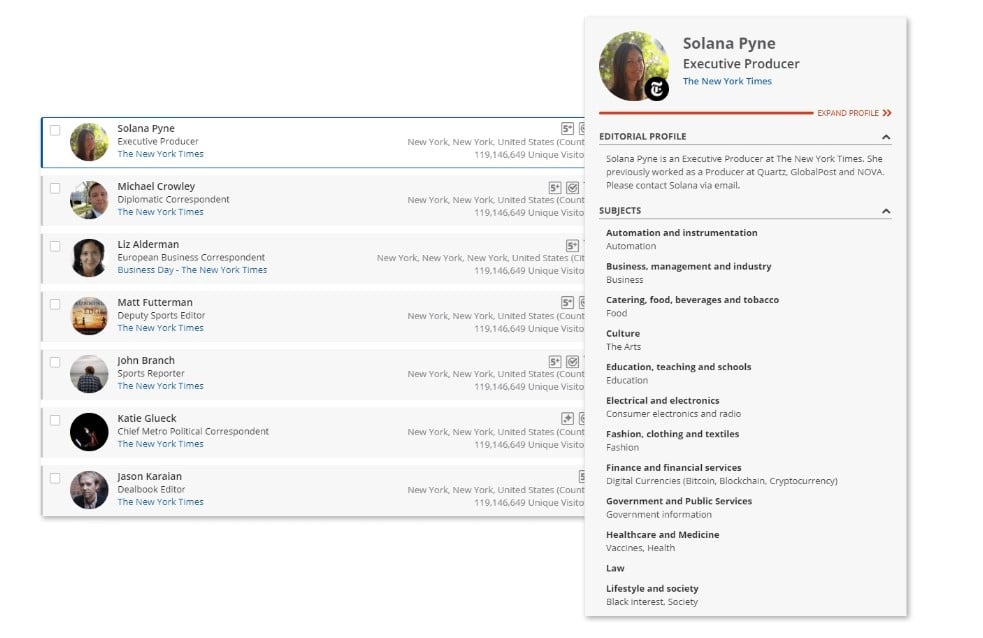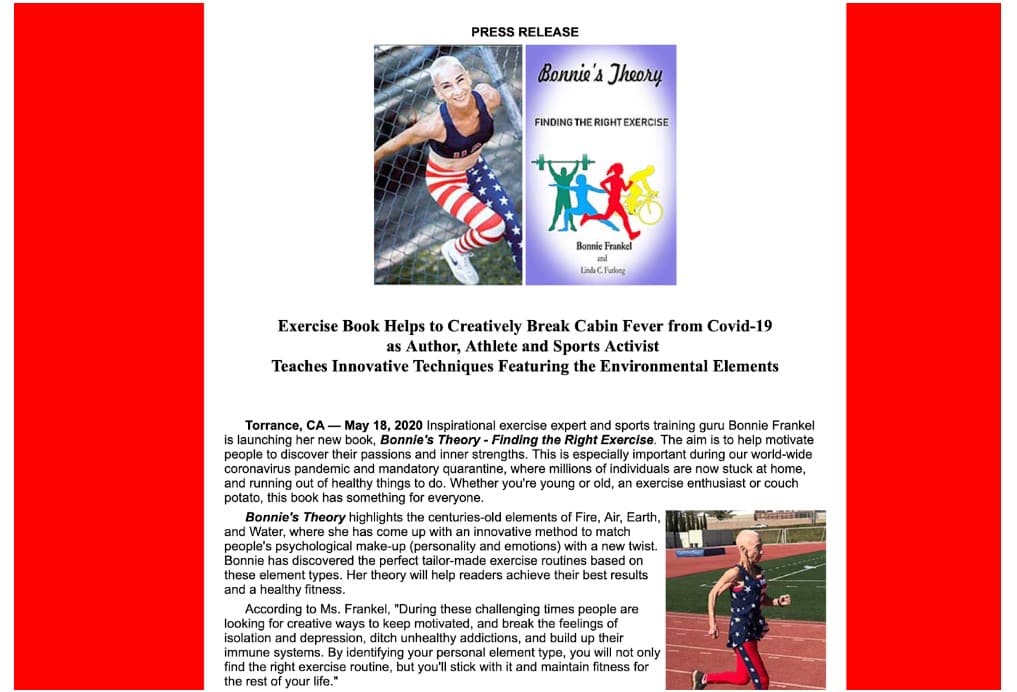As a seasoned public relations professional, you know that any PR strategy worth its salt includes creating and distributing press releases when a newsworthy story emerges. But writing a good press release is no easy feat—especially when pressed for time.
Even if you have written countless press releases over the years, chances are you’ve issued a press release that was far from perfect. We’ve all been there—and even the tiniest oversight can cost you an entire campaign.
There are numerous challenges to consider, from the timing of your release and the best channels for distribution down to the nitty gritty details like headlines and quotes. Along the way, even the most experienced among us are bound to make a few common press release mistakes.
So what are the most prevalent errors and how can you avoid them? Let’s find out…

Screenshot Sourced from Divert.co.uk
7 common press release mistakes to avoid
Knowing what a great press release should look like on paper is only half the battle. Whether your client is a small eCommerce brand like Frog Hollow Farm or an award-winning provider of remote access software like RealVNC, you should always be wary of these common mistakes to optimize the impact of your PR.
1. Not choosing a newsworthy story
Typically, the biggest hurdle that companies face when publishing a press release is that the story they want to talk about is simply not interesting. It doesn’t matter if you believe it is. If your message isn’t unique, intriguing, or timely, it won’t be picked up by any publication.
As exciting as it might seem to you, not everything your company does is worthy of being included in a single press release – that would be a waste of time. So first, ask yourself if your announcement is genuinely newsworthy. Generally, a newsworthy story might include:
- Product launches, such as a new remote device management tool
- New service offerings
- Event announcements like sports tournaments
- Changes in management
- New partners, such as celebrities or brand ambassadors
- Company milestones
Chances are, anything else is not significant enough to warrant a press release.

Screenshot Sourced from Coca-Cola.com
2. Opening with a weak headline
Headlines can make or break a release. Bad headlines feel dull, rushed, or bland. But an attention-grabbing headline will hook the reader straight away. And if you don’t offer them something juicy, they’ll move on.
Naturally, the type of headline you write largely depends on the press release topic as well as the company you are talking about. But a good rule of thumb is to use words and expressions that generate a sense of urgency, enthusiasm, and curiosity to encourage people to read it.
3. Using incorrect or confusing formatting
Another easily avoidable yet all too common press release mistake is formatting your piece of content incorrectly. This includes long paragraphs, large chunks of white text, inconsistent lining, and the like.
To avoid this, keep the body of the press release as neat and clear as possible. Segment sections into short, easy-to-read paragraphs, add bullet points for key takeaways, and don’t be afraid to write the most important sentences or quotes in bold.
4. Writing low-quality content
Few things say “unprofessional” like a document riddled with spelling mistakes. Put yourself in the shoes of your reader: what would you think of your company if you were reading a press release full of typos, grammar errors, and awkwardly-phrased paragraphs?
Spend enough time proofreading your press release, using both professional proofreaders and AI-based tools such as Grammarly. Read the entire release from a reader’s perspective, checking for proper punctuation, spelling, and flow.
5. Leveraging only one distribution channel
So, you’ve ticked all the previous boxes and your press release is good to go, right? But, wait! There is one final—and essential —step that you can’t overlook: distribution.
It’s one thing to craft a compelling, beautifully-written, and flawlessly formatted press release. But it can’t reach its full potential if it’s not distributed correctly. One of the biggest mistakes here is choosing only one distribution channel and ignoring the rest.

Image Sourced from AgilityPR.com
Dedicated press release distribution services are a surefire bet if you want to reach a local audience of outlets—for example, news websites with an .il domain by OnlyDomains if your target audience is based in Israel—and if your budget allows.
Many online platforms also give you access to a media database, newswire services, and media monitoring tools, so are excellent ways to reach your target audience and increase visibility.
But don’t overlook other channels, particularly if you want to target a niche audience, have a smaller budget, or want to communicate with journalists directly through their chosen platform. This might include:
- Turning your press release into a social media release (just be sure to tailor it to each platform)
- Sending personalized pitches to each journalist in mind via email or direct messages on social media
Social platforms are a brilliant way of engaging with influencers, bloggers, and other relevant stakeholders while growing your follower count at the same time. Followers can also share your press release with their own community, boosting your reach even further.
If you have a list of contacts that you think might want to read your press releases ahead of anyone else, consider journalists you have already worked with. They represent a great channel to distribute your new releases. Simply prepare a personalized email and send it to each of them directly.
In addition, if there are specific journalists that you would like to engage with but haven’t officially met yet, research their audience and what topics they normally cover. Once you’ve found an ideal match, it’s time to prepare your email pitch.
6. Rushing your pitch
Speaking of pitches, do you spend enough time fine-tuning them? If you find yourself often rushing the pitching stage, then you might not be making the most of your press release. To attract both journalists and distribution agencies, your press release pitch must:
- Feature a brief overview of the content. Keep it simple, short, and compelling, even if your release is about a potentially complex topic, such as how to remotely control Windows.
- Clearly highlight the importance of your press release, both from an industry-specific point of view and a broader one.
- Never include attachments, only links.
- Be as personal as possible. To this effect, consider using a similar style to the journalist or publication that you are targeting.

Screenshot Sourced from greenpeace.org
7. Timing it wrong
When something significant and newsworthy happens, your first instinct might be to publicize it straight away. But not only do you then risk rushing the whole process (and making some of the common mistakes we’ve discussed so far), it can also be completely wrong in terms of timing.
Typically, for your press release to gain the success and exposure that you want, you’ll need to factor in these three elements:
- Other major coverage: Is there a breaking or critical story that’s already keeping most journalists busy? This could include anything from political scandals to war-related events.
- Overarching campaign: Are you launching a marketing campaign together with your press release? If not, then your press release might not gain the traction you expect.
- Weekly schedules: Is your press release coming out on a “favorable” weekday? These include Mondays, Tuesdays, and Thursdays. In fact, many people tend to finish work earlier on Fridays and probably won’t read your press release until the following week.
These guidelines can be tricky to follow. After all, a press release should contain information that is as fresh and current as possible. How can you ensure this happens if you need to delay it because some major political news is rocking the world (or your country)?
The secret here is to wait until the situation has cooled off enough that it’s no longer monopolizing the media’s attention. After this, you can issue an up-to-date and compelling press release without the risk of other big news obscuring its content.
On the flip side, some local or global news stories may enhance your press release’s message. So keep an eye on relevant stories and consider pitching your release when it’s more timely and relevant.

Screenshot Sourced from Cognitext.com
No more press release mistakes
A well-thought-out PR strategy mustn’t overlook one of the most crucial pillars: the creation and distribution of a stellar press release. Whether you want to reveal your most recent media monitoring results, generate excitement over a new product, or update stakeholders about a management change, a press release can be a valuable tool to help you achieve your goals.
While there is no such thing as a perfect press release, by fine-tuning your approach and zooming into a few crucial elements, you can get as close to it as possible. Remember, editors are constantly searching for unique and compelling stories. So, by avoiding common press release mistakes and creating messages that give them what they’re looking for, you’ll be on your way to securing positive media coverage in no time.



